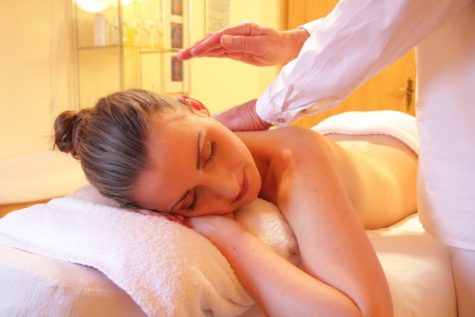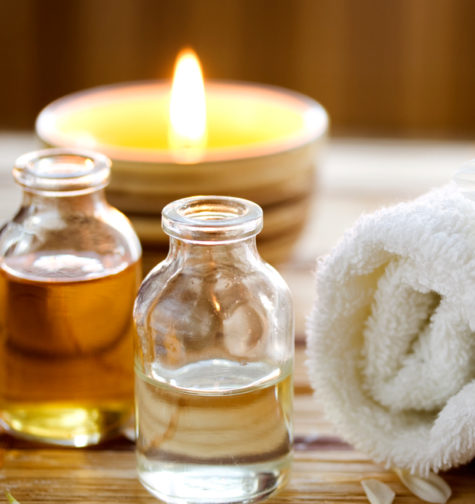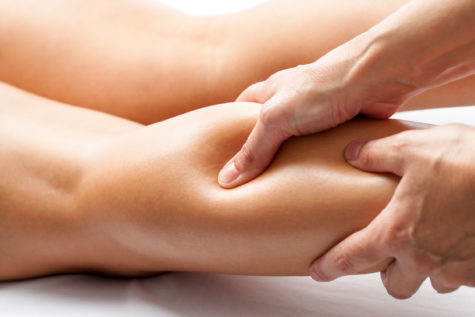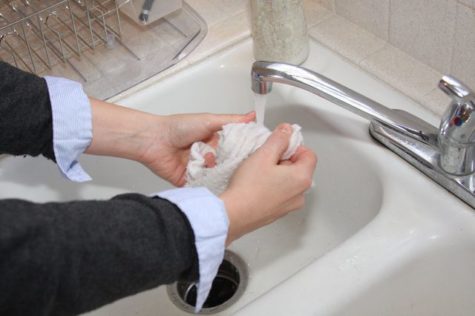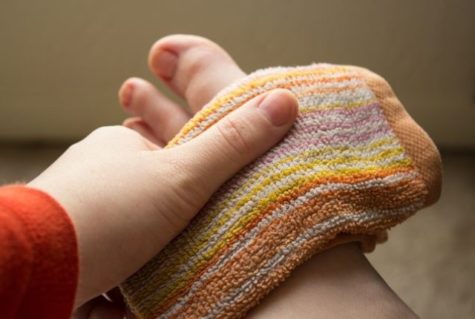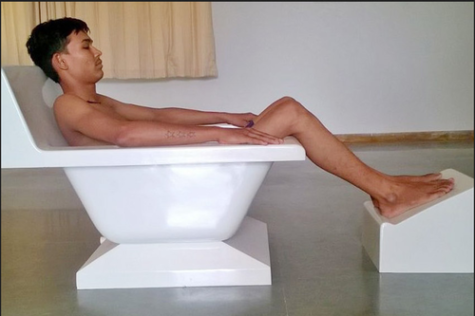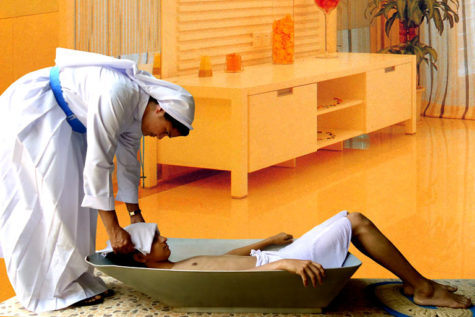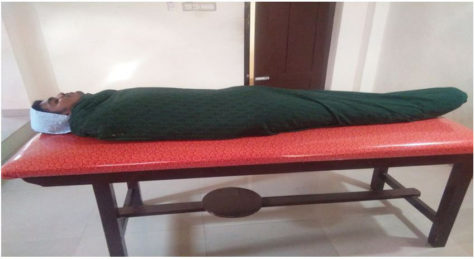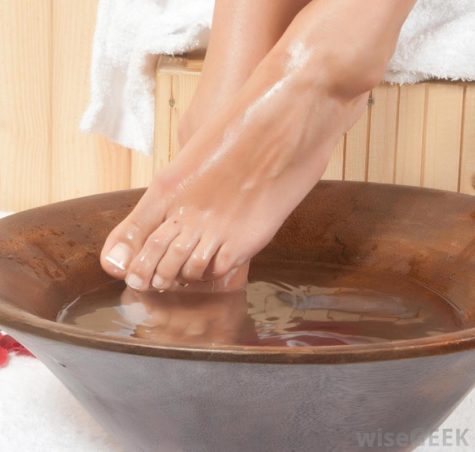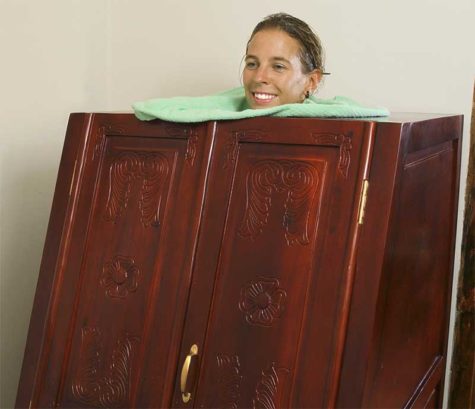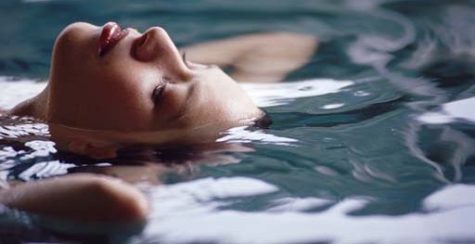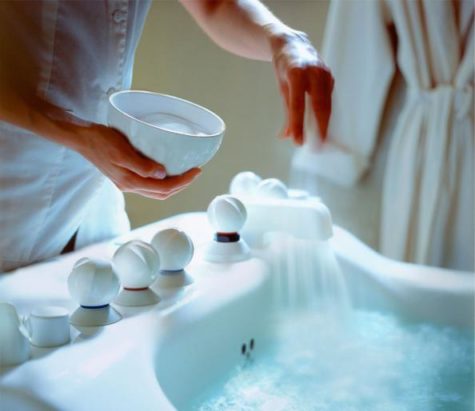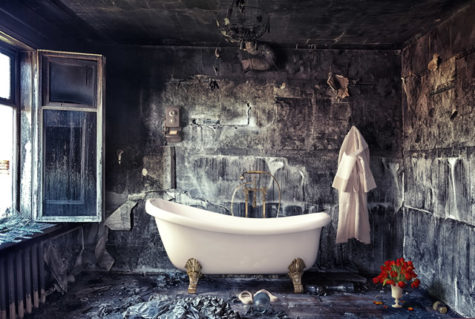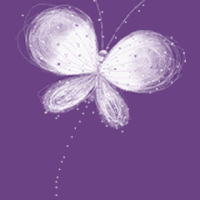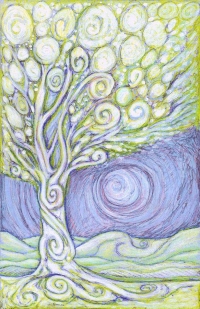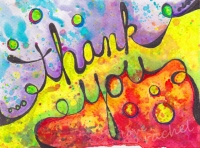All Purpose
Therapeutic Value of Massage
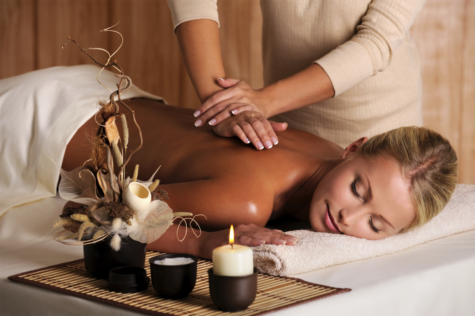
Massage is an excellent form of passive exercise. The word is derived from the Greek word ‘massier’ which means to knead. It involves the scientific manipulation of the soft tissues of the body. If correctly done on a bare body, it can be highly stimulating and invigorating. As far back as 400 B.C. , the great Hippocrates, the father of medicine, employed massage and manipulation in healing his patients. Since then it has been used as a mode of treatment for many ailments and it has restored many a sufferer to health and vigor.
Benefits
The general massage, dealing with all parts of the body, is highly beneficial in many ways. It tones up the nervous system, influences respiration and quickens the elimination of poisons and waste material from the body through the various eliminative organs such as the lungs, skin, kidneys and bowels. It also boosts blood circulation and metabolic processes. A massage removes facial wrinkles , helps to fill out hollow cheeks and neck and eases stiffness, sore muscles and numbness.
Various movements
There are five fundamental modes of manipulation in massage and these are : effleurage (stroking), friction ( rubbing), petrissage ( kneading), tapotment (percussion) and vibration (shaking or trembling).
- Effleurage
This involves sliding with the hands, using long even strokes over the surface of the body. Effleurage is performed in five ways, namely stroking with palms of two hands; the palm of one hand; the knuckles; the ball of the thumb and the finger tips. Effleurage increases blood circulation and soothes the nervous system. It also warms and relaxes. It is very helpful in atrophied condition of the skin.
- Friction
The movements, which are circular in nature are performed with the help of the thumb and tips of fingers or the palm of the hand towards the joints or around the joints. Friction limbers up joints, tendons, and muscles and facilitates the removal of deposits by breaking them. It also helps in reducing swelling after nerve inflammation.
- Petrissage
This is the process of kneading, pressing and rolling of the tissues and is performed with one or both hands, with two thumbs or with thumbs and fingers. One should apply heavy pressure for deep kneading and light pressure for superficial kneading. Petrissage is a treatment of the muscles. It increases nutrition, strengthens muscles, relieves intestinal congestion and helps elimination of the poisons. It boosts long activity and cellular respiration, eliminates fatigue poisons and tones up nerve endings.
- Tapotement
This involves hacking, tapping, clapping and beating and is achieved by striking the body rapidly. Short and quick blows are generally given from the wrist. Tapotement helps in atrophied condition of the muscles. It increases blood supply, soothes nerves and strengthens muscles.
- Vibrations
This is achieved by rapidly shaking the pressing movements by use of the hand or fingers on the body. Vibrating hand should move constantly. This is beneficial in neuritis and neuralgia after the inflammatory stage is over. It stimulates circulation, glandular activity and nervous plexuses. It also helps in bowel movement. Another form of massage helpful in most elements is the vibratory massage. This can be done by trained persons only. The vibratory muscles is more efficiently administered by a special, electrically operated machine.
Material for Massage
Cotton seed oil is most commonly used for massaging, but butter is used for filling out cheeks and the neck and also for breast enlargement. If the patient is averse to oil, talcum powder may be used. Oil should not be used by persons with excessive body hair. General body massage may be done for 40 to 45 minutes and local body massage for 10 to 15 minutes. The oil should be washed off completely after massage.
Therapeutic Uses
Massage can be used with advantage as a method of treatment for many common ailments. The various forms of massage and their usefulness in various diseases are described here in brief.
- Massage of the Joints
Stiff and swollen joints can be cured by massage combined with mechanical movements. Massage is, however, not recommended in serious inflammatory cases of the joints and in tubercular joints. It should also be avoided in infectious diseases like diphtheria and gonorrhea which cause formation of pus as massage may spread the pus to the entire system.
Sprains and bruises can be cured by massage. In these cases, affected parts should first be bathed with hot water for 15 to 30 minutes. Next the massage should be done for a few minutes. Gentle stroking and kneading is recommended on and around the injured tissues.
Fractures can also be treated through massage. This form of massage is of great help in atrophy of the muscles which usually follows if the muscles are not used for any length of time. This condition may also be brought about by injuries, diseases of the joints, inflammation of the muscles and nerves, and by too long use of cats, bandages and splints.
A human being carries one half of the weight of his body in the form of muscular tissues. One fourth of the blood supply circulates in the muscles. When one gets a good massage treatment, the muscles get regenerated and are then capable of holding half of the blood supply. Massage thus provides additional nourishment to feed the muscular tissues, helping them to grow strong. Tapping, striking, and vibrating help the muscle to develop its contractile power.
Muscle massage is brought by first effleurage, kneading, followed by tapotement. Later, active and passive movements are given. Massage is employed for eliminating muscle contraction and for breaking of adhesions. A little moderate kneading, and percussion cause muscles to contract and become stronger. Deep circular kneading and vibration loosens the muscles. Kneading under and round the muscles breaks up adhesions.
- Massaging the nerves
Massage benefits many nerve problems. In case of acute inflammation of the nerves, massage should be done carefully. Light and gentle stroking are recommended. Deep pressure should not be used on swollen nerves for it will increase the inflammation. All that is needed is just a gentle tapotement or beating of the nerve.
Nerve compression is recommended for soothing nerves. Grasp the limb with both hands, and create firm pressure around and down the arm. Start with the shoulder and proceed down to the wrist. As you leave the grip, bring the hands down a little and make another pressure. As a result, blood circulation will increase.
Spinal nerve compression is extremely beneficial. It is done by the palm of the hand. Vibration of the fingers stimulate it. Sleeplessness can be cured by long slow and gentle stroking down the spine and entire back.
- Abdominal Massage
This form of massage is beneficial in constipation. It stimulates the peristalsis of the small intestines, tones up the muscles of the abdomen walls and mechanically eliminates the contents of both large and small intestines. Abdominal massage should not be done in general, femoral, inguinal and umbilical hernia, inflammation of the uterus, bladder, ovaries and Fallopian tubes, kidney stones, bladder or gall bladder, ulcers of the stomach and intestines, and pregnancy.
Abdominal massage should not be done after a heavy meal, but after two hours or so. The bladder should be emptied before the massage. The patient is made to lie on his back with his knees drawn up. This enable the abdomen wall to relax. The masseur should stand at the right side of the patient and use his finger tips for friction round the umbilical region from right to left. He should likewise alternatively knead the walls and roll with both hands, making deep and firm pressure. He should knead with the hand and finger tips and keep clear of any wound or tender places. He should later take up massaging of the larger intestines.
The manipulation of the large intestine should begin on the right side. Keep it going upwards and across the transverse colon and move right down on the left side to the signoid flexure and rectum. Circular kneading should be done with the help of the three middle fingers. At the same time press into the contents of the abdomen, following the course of the larger colon with a crawling motion. Keep kneading by means of a few circular movements in one spot with the help of finger tips. Keep moving the fingers a little further along. Knead repeatedly.
Use knuckles of the hand to make deep pressure along the large colon, moving the hands along after each pressure. Once the kneading of the abdomen is over, follow up by tapotement with both hands cupped or use the knuckles of the hand. Vibration may also be employed. The patient could also be asked to do some gymnastic exercises for strengthening the walls of the abdomen.
Since blood pressure increases during abdominal manipulation, patients with hypertension should avoid abdominal massage. Massage should also be avoided in cases where there has been recent bleeding in the lungs, the stomach or the brain.
- Chest Massage
Chest massage is helpful in many ways. It strengthens the chest muscles, increases circulation and tones up the nervous system of chest, heart and lungs. It is especially recommended in weakness of the lungs,palpitation and organic heart disorders. Bust and mammary glands can be developed by proper massage. The patient is made to lie on the back with the arms at the sides.
The masseur starts manipulating the chest by means of strokes with both hands on each side of the breast bone. A circular motion is formed by the movement made up and down, moving down the chest. Next the muscle kneading is done by picking up the skin and muscles with both hands. Treatment is given to both sides of the chest likewise. Circular kneading is next done by placing one hand on each side of the breast bone and making the circular motion outward towards the side. Tapotement follows by hacking and slapping.
- Massage of Back
The purpose of the massage of the back is to stimulate the nerves and circulation for treating backache, rheumatic afflictions of the back muscles, and for soothing the nervous system. The patient is made to lie down with the arms at the sides. The masseur effleurages the back from the shoulders downwards using both hands on each side of the spine. Stroking is done from the sacrum upward. Friction follows with each hand at the sides of the spine going down slowly.
Next, kneading by muscle picking is done with squeezing. Alternate rapid pushing and pulling movement of the hands sliding down the spine. Circular kneading should also be done. The treatment should end by slapping, hacking and cupping on each side of the spine. Gentle stroking and light kneading of the back is relieving and soothing. Percussion and vibration result into stimulating experience. Vibration of the end of spine benefits the sacral nerves and pelvic organs. It is recommended in constipation, hemorrhoids, weakness and congestion of the bladder and sexual organs.
- Massage of the Throat
This helps to overcome headache, sore throat and catarrh of the throat. The patient is made to throw his head back. The masseur places palms of both hands on sides of neck with thumbs under the chin, and fingers under the ears. A downward stroke is next made towards the chest over the jugular veins. Do not exert heavily on the jugular veins.
About Therapeutic Baths
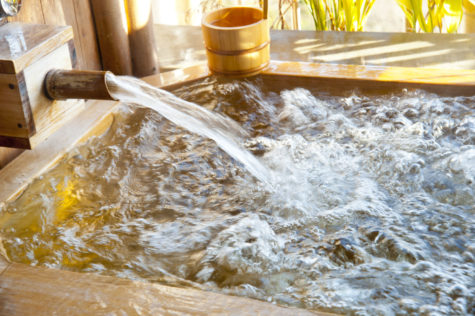
Water has been used as a valuable therapeutic agent since time immemorial. In all major ancient civilizations, bathing was considered an important measure for the maintenance of health and prevention of disease. It was also valued for its remedial properties. The ancient Vedic literature in India contains numerous references to the efficacy of water in the treatment of disease.
In modern times, the therapeutic value of water was popularized by Vincent Priessnitz, Father Sebastian Kneipp, Louis Kuhne and other European water-cure pioneers. They raised water cure to an institutional level and employed it successfully for the treatment of almost every known disease. There are numerous spas and “Bads” in most European countries where therapeutic baths are used as a major healing agent.
Water exerts beneficial effects on the human system. It equalizes circulation, boosts muscular tone and aids digestion and nutrition. It also tones up the activity of perspiratory gland and in the process eliminates the damaged cells and toxic matter from the system.
The common water temperature chart is : cold 100C to 180C, neutral 320C to 360C and hot 400C to 450C. Above 450C, water loses its therapeutic value and is destructive.
The main methods of water treatment which can be employed in the healing of various diseases in a do-it-yourself manner are described below.
Cold Compress
This is a local application using a cloth which has been wrung out in cold water. The cloth should be folded into a broad strip and dipped in cold water or ice water. The compress is generally applied to the head ,neck, chest, abdomen and back.
The cold compress is an effective means of controlling inflammatory conditions of the liver, spleen, stomach, kidneys, intestines, lungs, brain, pelvic organs and so on. It is also advantageous in cases of fever and heart disease. The cold compress soothes dermities and inflammations of external portions of the eye. When the eyeball is affected, the cold compress should follow a short fomentation.
Hot Compress
This is a cold compress covered in such a manner as to bring warmth. A heating compress consists of three or four folds of linen cloth wrung out in cold water which is then covered completely with dry flannel or blanket to prevent the circulation of air and help accumulation of body heat. It is sometimes applied for several hours. The duration of the application is determined by the extent and location of the surface involved, the nature and thickness of the coverings and the water temperature.
After removing the compress, the area should be rubbed with a wet cloth and then dried with a towel. A heating compress can be applied to the throat, chest, abdomen, and joints. A throat compress relieves sore throat, hoarseness, tonsillitis, pharyngitis and laryngitis.
An abdominal compress helps those suffering from gastritis, hyperacidity, indigestion, jaundice, constipation, diarrhea, dysentery and other ailments relating to the abdominal organs. The chest compress also known as chest pack, relieves cold, bronchitis, pleurisy, pneumonia, fever, cough and so on, while the joints compress is helpful for inflamed joints, rheumatism, rheumatic fever and sprains.
Enema
Also known as rectal irrigation, an enema involves the injection of fluid into the rectum. In nature cure treatment, only lukewarm water is used for cleaning the bowels. The patient is made to lie on his left side extending his left leg and bending the right leg slightly. The enema nozzle, lubricated with oil or Vaseline, is inserted in the rectum. The enema can containing the lukewarm water is then slowly raised and water is allowed to enter into the rectum. Generally, one to two liters of water is injected. The patient may either lie down on his back or walk a little while retaining the water. After five to 10 minutes, the water can be ejected along with the accumulated morbid matter.
A warm water enema helps to clean the rectum of accumulated fecal matter. This is not only the safest system for cleaning the bowels, but also improves the peristaltic movement of the bowels and thereby relieves constipation. A cold water enema is helpful in inflammatory conditions of the colon, especially in cases of dysentery, diarrhea, ulcerative colitis, hemorrhoids and fever. A hot water enema is beneficial in relieving irritation due to inflammation of the rectum and painful hemorrhoids. It also benefits women in leucorrhoea.
Hip Baths
The hip bath is one of the most useful forms of hydrotherapy. As the name suggests, this mode of treatment involves only the hips and the abdominal region below the navel. A special type of tub is used for the purpose. The tub is filled with water in such a way that it covers the hips and reaches up to the navel when the patient sits in it. Generally, four to six gallons of water are required. If the special tub is not available, a common tub may be used. A support may be placed under one edge to elevate it by two or three inches. Hip bath is given in cold, hot, neutral or alternate temperatures.
- Cold Hip Bath
The water temperature should be 100C to 180C. The duration of the bath is usually 10 minutes, but in specific conditions it may vary from one minute to 30 minutes. If the patient feels cold or is very weak, a hot foot immersion should be given with the cold hip bath.
The patient should rub the abdomen briskly from the navel downwards and across the body with a moderately coarse wet cloth. The legs, feet and upper part of the body should remain completely dry during and after the bath. The patient should undertake moderate exercise like yoga asanas, after the cold hip bath, to warm the body.
A cold hip bath is a routine treatment in most diseases. It relieves constipation, indigestion, obesity and helps the eliminative organs to function properly. It is also helpful in uterine problems like irregular menstruation, chronic uterine infections, pelvic inflammation, piles, hepatic congestion, chronic congestion of the prostate gland, seminal weakness, impotency, sterility, uterine and ovarian displacements, dilation of the stomach and colon, diarrhea, dysentery, hemorrhage of the bladder and so on. The cold hip bath should not be employed in acute inflammations of the pelvic and abdominal organs, ovaries and in painful contractions of the bladder, rectum or vagina.
- Hot Hip Bath
This bath is generally taken for eight to 10 minutes at a water temperature of 400C to 450C. The bath should start at 400C. The temperature should be gradually increased to 450C. NO friction should be applied to the abdomen. Before entering the tub,the patient should drink one glass of cold water. A cold compress should be placed on the head.
A hot hip bath helps to relieve painful menstruation, pain in the pelvic organs, painful urination, inflamed rectum or bladder and painful piles. It also benefits enlarged prostatic gland, painful contractions or spasm of the bladder, sciatica, neuralgia of the ovaries and bladder. A cold shower bath should be taken immediately after the hot hip bath.
Care should be taken to prevent the patient from catching a chill after the bath. The bath should be terminated if the patient feels giddy or complains of excessive pain.
- Neutral Hip Bath
The temperature of the water should be 320C to 360C. Here too, friction to the abdomen should be avoided. This bath is generally taken for 20 minutes to an hour. The neutral hip bath helps to relieve all acute and sub-acute inflammatory conditions such as acute catarrh of the bladder and urethra and subacute inflammations in the uterus, ovaries and tubes. It also relieves neuralgia of the Fallopian tubes or testicles, painful spasms of the vagina and prorates of the anus and vulva. Besides, it is a sedative treatment for erotomanis in both sexes.
- Alternate Hip Bath
This is also known as revulsive hip bath. The temperature in the hot tub should be 400C to 450C and in the cold tub 100C to 180C. The patient should alternately sit in the hot tub for five minutes and then in the cold tub for three minutes. The duration of the bath is generally 10 to 20 minutes. The head and neck should be kept cold with a cold compress. The treatment should end with a dash of cold water to the hips.
This bath relieves chronic inflammatory conditions of the pelvic viscera such as salpingitis, ovaritis, cellulitis and various neuralgias of the genito-urinary organs, sciatica and lumbago.
Spinal Bath
The spinal bath is another important form of hydrotherapic treatment. This bath provides a soothing effect to the spinal column and thereby influences the central nervous system. It is given in a specially designed tub with its back raised so as to provide proper support to the head. The bath can be administered at cold, neutral and hot temperatures. The water level in the tub should be an inch and a half to two inches and the patient should lie in it for three to 10 minutes.
The cold spinal bath relieves irritation, fatigue, hypertension and excitement. It is beneficial in almost all nervous disorders such as hysteria, fits, mental disorders, loss of memory and tension. The neutral spinal bath is a soothing and sedative treatment, especially for the highly strung and irritable patient. It is the ideal treatment for insomnia and also relieves tension of the vertebral column. The duration of this bath is 20 to 30 minutes.
The hot spinal bath, on the other hand, helps to stimulate the nervous, especially when they are in a depressed state. It also relieves vertebral pain in spondylitis and muscular backache. It relieves sciatic pain and gastrointestinal disturbances of gastric origin.
Full Wet Sheet Pack
This is a procedure in which the whole body is wrapped in a wet sheet, which in turn is wrapped in a dry blanket for regulating evaporation. The blanket should be spread on the bed with its edges hanging over the edge of the bed. The upper end should be about eight inches from the head of the bed. Then spread a linen sheet wrung out in cold water over the blanket so that its end is slightly below the upper end of the blanket.
The patient should lie on the bed sheet with his shoulders about three inches below the upper age. The wet sheet should be weekly wrapped round the body of the patient, drawn in, tightly tucked between the legs and also between the body and the arms. The sheet should be folded over the shoulders and across the neck. Now the blanket should be drawn tightly around the body and tucked in along the side in a similar manner, pulling it tightly. The ends should be doubled up at the feet.
A turkish towel should be placed below the chin to protect the face and neck from coming into contact with the blanket and to exclude outside air more effectively. The head should be covered with a wet cloth so that the scalp remains cold. The feet should be kept warm during the entire treatment. If the patient’s feet are cold, place hot water bottles near them to hasten reaction. The pack is administered for half an hour to one hour till the patient begins to perspire profusely. He may be given cold or hot water to drink.
This pack is useful in cases of fever especially in typhoid and continued fevers, and benefits those suffering from insomnia, epilepsy and infantile convulsions. It is useful in relieving chronic cold and bronchitis and helps in the treatment of rheumatism and obesity.
Foot Baths
- Hot Foot Bath
In this method, the patient should keep his or her legs in a tub or bucket filled with hot water at a temperature of 400C to 450C. Before taking this bath, a glass of water should be taken and the body should be covered with a blanket so that no heat or vapour escapes from the foot bath. The head should be protected with a cold compress. The duration of the bath is generally from 5 to 20 minutes. The patient should take a cold shower immediately after the bath.
The hot foot bath stimulates the involuntary muscles of the uterus, intestines, bladder and other pelvic and abdominal organs. It also relieves sprains and ankle joint pains, headaches caused by cerebral congestion and colds. In women, it helps restore menstruation , if suspended, by increasing supply of blood especially to the uterus and ovaries.
- Cold Foot Bath
Three to four inches of cold water at a temperature of 7.20C to 12.70C should be placed in a small tub or bucket. The feet should be completely immersed in the water for one to five minutes. Friction should be continuously applied to the feet during the bath, either by an attendant or by the patient by rubbing one foot against the other.
A cold foot bath, taken for one or two minutes,relieves cerebral congestion and uterine hemorrhage. It also helps in the treatment of sprains, strains and inflamed bunions when taken for longer periods. It should not be taken in cases of inflammatory conditions of the genito-urinary organs, liver and kidneys.
Steam Bath
Steam bath is one of the most important time-tested water treatments which induces perspiration in a most natural way. The patient, clad in minimum loin cloth or underwear, is made to sit on a stool inside a specially designed cabinet. Before entering the cabinet, the patient should drink one or two glasses of cold water and protect the head with a cold towel. The duration of the steam bath is generally 10 to 20 minutes or until perspiration takes place. A cold shower should be taken immediately after the bath.
Very weak patients, pregnant women, cardiac patients and those suffering from high blood pressure should avoid this bath. If the patient feels giddy or uneasy during the steam bath, he or she should be immediately taken out and given a glass of cold water and the face washed with cold water.
The steam bath helps to eliminate morbid matter from the surface of the skin. It also improves circulation of the blood and tissue activity. It relieves rheumatism, gout, uric acid problems, and obesity. The steam bath is helpful in all forms of chronic toxemia. It also relieves neuralgia, chronic nephritis, infections, tetanus and migraine.
Immersion Baths
This is also known as full bath. It is administered in a bath tub which should be properly fitted with hot and cold water connections. The bath can be taken at cold, neutral, hot, graduated and alternate temperatures.
- Cold Immersion Bath
This may be taken for four seconds to 20 minutes at a temperature ranging from 100C to 23.80C. Before entering the bath, cold water should be poured on the patient’s head, chest and neck and the head should be protected with a cold moist towel. During the bath, the patient should vigorously rub his or her body. After the bath the body should be quickly dried and wrapped up in a blanket. If the climate is favourable, moderate exercise should be undertaken.
This bath helps to bring down fever. It also improves the skin when taken for five to 15 seconds after a prolonged hot bath, by exhilarating circulation and stimulating the nervous system.
This bath should not be given to young children or very elderly persons, nor be taken in cases of acute inflammation of some internal organs such as acute peritonitis, gastritis, enteritis and inflammatory conditions of uterus and ovaries.
- Graduated Bath
The patient should enter the bath at a temperature of 310C. The water temperature should be lowered gradually at the rate of 10C per minute until it reaches 250C. The bath should continue until the patient starts shivering. The graduated bath is intended to avoid nervous shock by sudden plunge into the cold water. This bath is often administered every three hours in cases of fever.
It effectively brings down the temperature except in malarial fever. Besides, it also produces a general tonic effect, increases vital resistances and energizes the heart.
- Neutral Immersion Bath
This bath can be given from 15 to 60 minutes at a temperature ranging from 260C to 280C. It can be given for long duration, without any ill-effects, as the water temperature is akin to the body temperature. The neutral bath diminishes the pulse rate without modifying respiration.
This treatment is the best sedative. Since the neutral bath excites activity of both the skin and the kidneys, it is recommended in cases relating to these organs. It is also beneficial for cases of organic diseases of the brain and spinal cord, including chronic inflammatory conditions such as meningitis, rheumatism and arthritis.
A neutral immersion bath taken for 30 to 60 minutes is highly beneficial in general dropsy, due to cardiac or renal diseases. It also helps those suffering from multiple neuritis, alcoholism and other narcotic habits, chronic diarrhea, peritonitis and chronic affections of the abdomen. In such cases the bath may be given daily for 15 to 30 minutes. This bath is also useful in the toxemic conditions caused by dyspepsia and pruritus. The neutral bath should not be prescribed in certain cases of eczema and other forms of skin diseases where water aggravates the symptoms, nor in cases of extreme cardiac weakness.
- Hot Immersion Bath
This bath can be taken from two to 15 minutes at a temperature from 36.60C to 400C. Generally this bath is started at 370C and the temperature is then gradually raised to the required level by adding hot water. Before entering the bath, the patient should drink cold water and also wet the head, neck and shoulders with cold water. A cold compress should be applied throughout the treatment.
This bath can be advantageously employed in dropsy when there is excessive loss of tone of the heart and blood. This bath also relieves capillary bronchitis and bronchial pneumonia in children. It relieves congestion of the lungs and activates the blood vessels of the skin muscles. The bath should be terminated as soon as the skin becomes red.
In pneumonia and suppressed menstruation, the bath should be administered at 37.70C to 400C for about 30 to 45 minutes. This bath should be given when the menstruation is due and may be repeated for two to three days in succession. In dysmenorrhoea, this bath should be given at 380C to 44.40C for 15 minutes.
In chronic bronchitis a very hot bath taken for 5 to 7 minutes should be accompanied with rubbing and friction. This relieves congestion of the mucous membrane and provides immediate relief After the bath, oil should be applied to the skin if necessary.
The hot bath is a valuable treatment in chronic rheumatism and obesity. It gives immediate relief when there is pain due to stones in the gall bladder and the kidneys. The hot bath should not be taken in cases of organic diseases of the brain or spinal cord, nor in cases of cardiac weakness and cardiac hypertrophy.
Epsom Salt Bath
The immersion bath tub should be filled with about 135 litres of hot water at 400C. One to 1 1/2 kg. of Epsom salt should be dissolved in this water. The patient should drink a glass of cold water, cover the head with a cold towel and then lie down in the tub, completely immersing the trunk, thighs and legs for 15 to 20 minutes. The best time to take this bath is just before retiring to bed. This is useful in cases of sciatica, lumbago, rheumatism, diabetes, neuritis, cold and catarrh, kidney disorders and other uric acid and skin affections.
Precautions
Certain precautions are necessary while taking these therapeutic baths. Full baths should be avoided within three hours after a meal and one hour before it. Local baths like the hip bath and foot bath may, however, be taken two hours after a meal. Clean and pure water must be used for baths and water once used should not be used again.
While taking baths, temperature and duration should be strictly observed to obtain the desired effects. A thermometer should always be used to measure the temperature of the body. Women should not take any of the baths during menstruation. They can take only hip baths during pregnancy till the completion of the third month.
